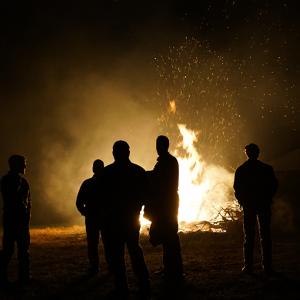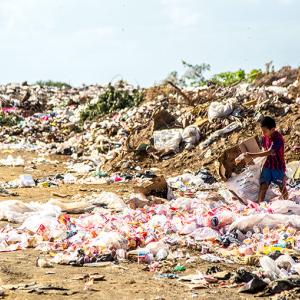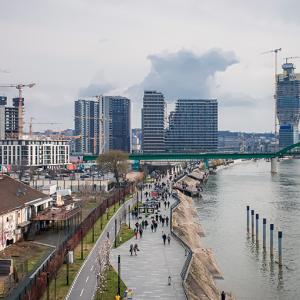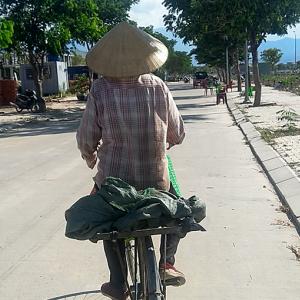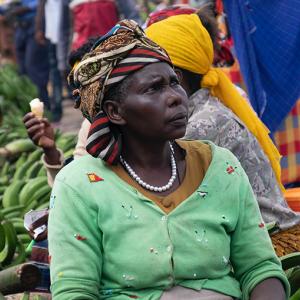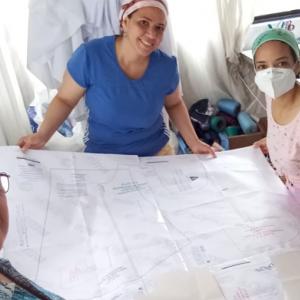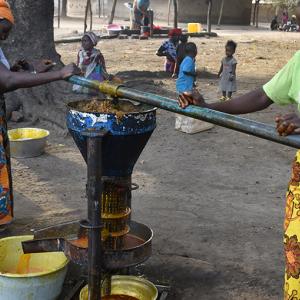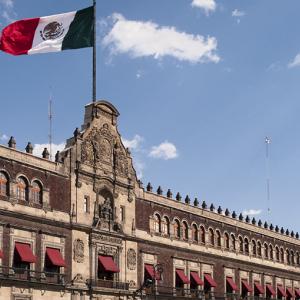What is the problem?
The WHO has estimated that around seven million premature deaths globally are caused by air pollution every year. Air quality monitoring is important for ensuring that pollution is brought down within limits that are acceptable for health and wellbeing. These measurements are typically supported by expensive fixed-location sensors and stations that sample at the macroscale level. Although the data from these sensors is very accurate, they are costly to maintain and calibrate. They also fail to capture the fluctuations in air quality across cities or the typical exposures to pollutants as citizens move around.

What did the Accelerator Lab and partners do?
Using participatory citizen science and low-cost sensors, the Lab set out to build a detailed understanding of differences in air quality across different parts of Buenos Aires. The team established a partnership with open-seneca, a worldwide network of citizen science pilots that measures air quality using low-cost sensors. They ran two workshops where 80 local university students learned to build the air quality sensors, helping them to develop new skills and learn about the impact of air quality on health. Each sensor cost just US$150, in contrast to the US$50,000 cost of official sensors. Then, using an open call, the team recruited 20 volunteers to take part in the data collection. Over a period of seven weeks, these ‘citizen sensors’ collected data about daily changes to air quality around Buenos Aires by carrying the DIY sensors on their bikes. Each user regularly uploaded their data to the open-seneca platform where it was aggregated to produce a city-level visualization of air pollution.
What was the benefit of using collective intelligence for this issue?
The main benefit is a more granular understanding of air pollution. The aggregated data was shared and discussed with the Ministry of the Environment and Sustainable Development and the Buenos Aires City Government. Although official air quality data has shown that the city generally remains within the limits recommended by the WHO, the citizen-generated data helped to demonstrate localized hotspots (such as traffic junctions) where pollutants exceeded acceptable levels. Using collective intelligence helped the team to generate new data on air quality cheaply and quickly. Since the pilot, officials from the city administration and Ministry of Environment and Sustainable Development have worked with the project team to explore other measurements that could be obtained through citizen sensing, such as noise and temperature.
Figure 3
An example of the maps generated by combining the data collected by participants

What next?
The Lab has launched similar air quality pilots in other cities across Argentina in partnership with local authorities. These include the provinces of Mendoza, Cordoba and Tucuman. In these locations, citizen science will be used to create a much needed primary data source about air quality.
What does this experience tell us about collective intelligence design?
The project helped the Lab to understand the value of identifying specific policy needs early on in the project design to ensure that the results of a project can be taken up by the government. By working together with the Ministry of Environment and Sustainable Development, local governments across Argentina, scientists and citizens, they learned to tailor follow-on projects according to the priorities of each location. For example, in Buenos Aires they’ll use temperature and humidity measurements obtained by the sensors to design urban ‘climate corridors’, while in more rural locations, they’ll focus on measuring the impact of local practices such as open burning on air quality. This is helping the Lab to ensure that the data created through the citizen sensors has a clear route to impact.

